SMU seismologist Brian W. Stump has travelled far and wide to better understand the sound waves and vibrations that occasionally burp and shudder through and around the Earth.
The past several years, Stump, the Claude C. Albritton Jr. Chair in SMU’s Roy M. Huffington Department of Earth Sciences in Dedman College, has expanded his research to China and South Korea.
His scientific view also has broadened to include the role played by the atmosphere as well as the Earth in wave propagation, an area of expertise. And serving on the board of directors of the Incorporated Research Institutions for Seismology, or IRIS, has transformed him into an advocate for the increasingly collaborative discipline.
Collaboration is one purpose of a joint U.S.-China research project, “Study of Regional Broadband waves from Earthquakes and Man-induced Events in NE China,” north of Beijing where Stump has focused research attention since 2002.
Sponsored by the U.S. Air Force Research Laboratory, SMU researchers and those from the China Earthquake Administration’s Institute of Geophysics have deployed a network of 15 seismic instrument stations to record broadband waves radiating 100 to 1,000 kilometers from earthquakes and such man-induced events as mining explosions.
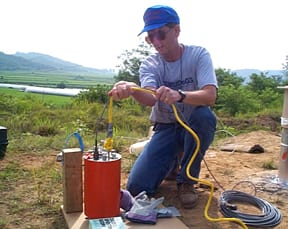
The study sites incorporate areas of frequent earthquake activity, including Haicheng, where the first successful earthquake prediction was made more than 30 years ago. As forecast, a magnitude 7.3 quake struck Haicheng February 4, 1975, whereupon 90 percent of all buildings there collapsed. But “as a result of the prediction and evacuations in the days preceding the event,” Stump recalled in a Dedman College Master Lecture delivered last year, “no lives were lost in a region of three million inhabitants.”
In late July the following year, however, without any warning a magnitude 7.8 quake hit Tangshan, a city southwest across the Gulf of Liaoning from Haicheng. Nearly 250,000 people died.
Brian W. Stump
“Earthquakes in that region aren’t understood very well,” says Stump, who earned his Ph.D. in geophysics from the University of California, Berkeley. That knowledge deficit has spurred project scientists to better understand the seismicity of that part of the world, with hazard reduction as one ultimate goal. More immediately, however, “the major emphasis is trying to understand the crust and mantle in this area,” he says.

Back to China
Stump returns to China in July for an American Geophysical Union conference in Beijing. Post doctoral fellow Rongmao Zhou will present a paper on the crust and upper mantle at each site. Stump identified Zhou, a 2004 SMU Ph.D. recipient from China, as “the key person” on the project. Zhou says he chose SMU over other universities because of Stump’s personality and reputation.
“He always is supportive of his students and colleagues,” Zhou says. “And he encourages us to explore new ideas and directions.” Although Stump and fellow SMU geophysics professors “make our geophysical program notable to the world,” Zhou says, it isn’t only with peers that Stump shares his enthusiasm.
Rongmao Zhou
Aileen Fisher served as Stump’s teaching assistant last fall for an introductory class, Earthquakes and Volcanoes.
“Even though the students were freshman and sophomore nonmajors, he made the class interesting and versatile,” Fisher says. “I know he spent at least two or three hours a week outside of class talking with some of these intro students who were just interested in the topic.”
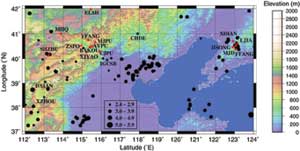
Since 1999 another topic of interest to Stump and fellow SMU scientists has been a research project in South Korea, in which some experiments focused skyward. They followed sound waves through the atmosphere with acoustic gauges, as well as vibrations through the ground with seismometers.
Sponsored by the U.S. Department of Defense and conducted jointly with the Korea Institute of Geoscience and Mineral Resources, the project follows the pioneering work of SMU’s Schuler-Foscue Professor of Geological Sciences Eugene Herrin in combining seismic and acoustic observations, Stump says.
“We call it seismo-acoustic analysis,” he says.
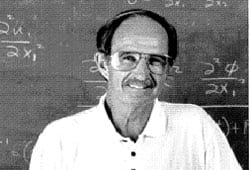
The South Korea project initially focused on locating and identifying industrial blasting events because Herrin had discovered that certain wave generators, including explosions and earthquakes, create not only seismic waves but also infrasound waves. Based on that discovery, Herrin was one of the first proponents of using seismo-acoustic analysis to identify mining explosions.
“Every country in the world uses mining explosions every day,” Stump says.
Eugene Herrin
Because blasts, a standard mining practice, are so prevalent, particularly as “small events below magnitude 4,” the ability to distinguish their wave characteristics from those of earthquakes is important, he adds. Equally important is the ability of seismologists to differentiate mining detonations from nuclear weapons tests.
Stump says that he knows of no weapons tests that have occurred since India detonated five underground nuclear explosions in May 1998, and Pakistan six. However, two seismic stations installed and operated by SMU continue in service to the International Monitoring System of the Comprehensive Nuclear Test-Ban Treaty Organization in Vienna. One is in the Big Bend area of Texas and one in Nevada.
North Korea’s recent announcement to obtain and build nuclear weapons “makes understanding such a test event even more important,” Stump says.
“Certainly stating that they will develop the weapons and actually testing are two different things,” he says. “This difference drives the continuation of negotiations with the Koreans.”
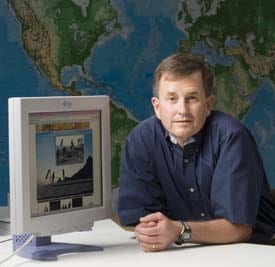
New projects ahead
Stump, who in 2004 was honored with the yearlong Dedman Family Distinguished Professorship, joined SMU in 1983.
From 1994 to 1996 he assisted in the development of nuclear test-ban verification technology for the Department of Energy at the Los Alamos National Laboratory in New Mexico.
Stump also served as a Department of Energy technical adviser to the U.S. delegation to disarmament negotiations in Geneva, Switzerland.
That experience made it logical for the Seismological Society of America to tap Stump as one of two experts to convene special gatherings at a significant meeting in San Francisco in April.
Brian W. Stump
For the 100th Anniversary Earthquake Conference Commemorating the 1906 San Francisco Earthquake, Stump and William R. Walter of the Lawrence Livermore National Laboratory assembled studies and presenters for the “Nuclear Explosion Monitoring Anniversary Sessions.” The sessions took a retrospective look at nuclear monitoring seismology, the branch of science that came into being when seismographs detected the first atomic bomb test in New Mexico in July 1945.
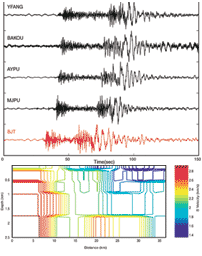
Looking forward, Stump expresses excitement about EarthScope, a more than $200 million initiative to study North America’s crust and mantle as well as the processes that control its earthquakes and volcanoes.
Funded by the National Science Foundation, EarthScope brings together space, geoscience, telecommunications, and other specialists to compile a 3-D portrait below ground using seismometers, global positioning satellite receivers, satellite radar imagery, strain meters, and other collection and analysis instruments.

IRIS is a consortium of university and not-for-profit organizations committed to seismological research. Stump is a member of its board. The consortium manages the data sent in from a network of 100 fixed and 400 transportable EarthScope seismic stations.
“It’s only through collaboration and multiple participants that EarthScope is able to be accomplished,” Stump says. “The collaboration is improving the way seismology is being done. This is exciting because it changes the way my profession does business.”
Related links:
Brian Stump’s research
Brian Stump
Rongmao Zhou
Aileen Fisher
Eugene Herrin
SMU Geophysical Imaging Laboratory
SMU Geophysics Research Archives
Incorporated Research Institutions for Seismology
Explainer: Comprehensive Test Ban Treaty
Geotimes 2002 CTBT article
Explainer: Industrial mining and explosions
GeoScience World: Mining explosion article
Roy M. Huffington Department of Earth Sciences
Dedman College of Humanities and Sciences

 Krueger believes that pulsed jets, consisting of a series of jet pulses with no flow between them, is a promising approach to developing micropropulsion capability. He plans to develop a model system that propels itself using pulsed jets generated by a volume-displacement mechanism. The behavior of this representative vehicle will help reveal how to adapt pulsed jet propulsion for small-scale vehicles.
Krueger believes that pulsed jets, consisting of a series of jet pulses with no flow between them, is a promising approach to developing micropropulsion capability. He plans to develop a model system that propels itself using pulsed jets generated by a volume-displacement mechanism. The behavior of this representative vehicle will help reveal how to adapt pulsed jet propulsion for small-scale vehicles.